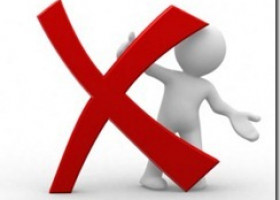
أخطاء تسويقية قاتلة
لماذا يفشل التسويق ؟ يحدد عميد علم التسويق فيليب كوتلر عشرة أسباب رئيسية يعتبرها أوجه قصور في ممارسات التسويق المعاصر، منبها إلى أن الأزمة أزمة ممارسة تسويق وليس نظريات تسويق: عدم تركيز وتوجه الشركات نحو التسويق واستهداف العملاء بشكل كاف عدم فهم واستيعاب المؤسسة لعملائها المستهدفين، من حيث الاحتياجات والتغيرات التي تنتابهم. عدم قيام الشركة بمتابعة ورصد أحوال منافسيها، وبذلك تتأخر عنهم، ولا تواكب أي تطورات تطرأ عليهم. سوء إدارة المؤسسة لعلاقاتها مع حملة أسهمها، إما بتجاهلهم تماما أو بالتركيز على متطلباتهم دون غيرهم. عدم تمكن الشركة من العثور على فرص جديدة ، أو التعرف عليها واقتناصها، كأي تطور تكنولوجي جديد، أو أية أسواق جديدة، أو حتى أي ثغرات أو فراغ تتركه شركة تركت السوق. قصور وأخطاء في إجراءات التخطيط التسويقي، كالفهم الخطأ للسوق أو آلياته. قصور في مجال سياسات الإنتاج أو خدمة العملاء، مما يهدر أية مجهودات تسويقية تقوم بها المؤسسة. ضعف محاولات ومجهودات الشركة لتكوين الماركة وتوصيلها للعملاء. عدم تنظيم المؤسسة جيدا، بحيث ينعكس ذلك على مجهودات التسويق. عدم استغلال التطور التكنولوجي بشكل كاف، مما يساعد على تدهور ترتيب الشركة في قائمة الشركات الناجحة المواكبة للتطور والتي تحسن استغلاله لصالحها. ويختتم كوتلر كتابه بعشر وصايا للتسويق الناجح الفعال، هي: تقسيم السوق إلى قطاعات واختيار أفضلها وتكوين مركز ووضع…
Source: Cox, Kathryn J. (editor) 1979, revised 2005. “20 Questions” Get Acquainted Team Building Activity. Columbus, OH: OSU Extension. The original source of this activity is unknown. Variations have been published in several compilations of team building and group training exercises. However, versions were used as early as the 1960’s in Ohio 4-H camp programs and conference sessions. This activity has been used successfully in Ohio’s State 4-H Leadership Camp Staff Orientation, and by the counselors with their camper groups, each year since 1979. Objective: As a result of participating in this activity, group participants learn each other’s names and get to know each other at a deeper level in a shorter period of time than is often possible with other types of group introductory activities. Time Required: At least 15-20 minutes for the question & answer portion, plus 5 minutes for processing/ reflection at the end. If time is limited or groups are very large, divide participants into sub-groups of 10 to 25 people per group. It also works well to divide this activity into shorter rounds of questions & answers between other activities. Directions: • Have participants seated or standing in a circle, so that everyone is…
Continue reading …